D1.1 - NBS CatalogueThe target of this document is the definition of a catalogue of Nature Base Solutions (NBS) that include all the possible characteristics (technical, economic, environmental, and social) of each one of them.
In order to be able to select the best options to introduce them in the development of a RUP, allowing the definition of different scenarios, which have been evaluated to define its viability and impact to improve the behaviour of the city regarding the climate change challenges.
During the process, features of each NBS identified have been taken into account, in order to be able to describe the impact of the technology since economic, environmental, social and aesthetical issues, for which it has been necessary to identify the KPIs that have been taking into account in each implementation for measuring the behaviour of NBS, as well as the qualitative features. On the other hand, the process of implementation and the stakeholders that take part on it has also been taken into account.
This catalogue allows to identify solutions taking different criteria’s depending on characteristics of the city/area, problems, challenges, budget, social issues, climate, previous experiences, etc.
Download
D1.2 - Climate Change Challenge CatalogueThis report provides a useful tool for the standardisation of a method to identify and evaluate cities in respect of several societal city challenges.
Such a tool will allow practitioners to be able to examine these challenges in a simple way with accurate information about how these challenges might affect cities and how and why cities might come to understand urban vulnerability as soon as possible.
Although its title is “Climate Change Challenge Catalogue”, its approach was redefined to cover a wider definition of “challenge”. This was due to the fact that nature-based solutions are solutions to a number of societal challenges and not only climate change issues.
For this reason, a brief subset of challenges in form of cards has been developed to form this catalogue, including their definition as well as key indicators and methods for assessing the possible impacts to be achieved through the use of nature-based solutions in cities.
Download
D1.3: City and area diagnosis procedureThe aim of this report is to provide cities with a useful guide to the diagnosis process for re-naturing of cities and/or its areas.
The document explains with more detail the diagnosis procedure, an initial and important part of the URBAN GreenUP re-naturing urban planning concept and process (RUP). It supports the direct implementation of one or a set of NBS in a specific area of the city to address also specific challenges in a more effective way.
The document explains the importance of the diagnosis procedure like the procedures directly linked to. It indicates the objectives and outlines the supporting tools to cross the process.
Download
D1.4: Baseline Calculation ProcedureThe report informs the on-going design, implementation and maintenance of NBS interventions, as well as help structure and guide future investment in NBS
This report uses a ‘Process Chain’ to provide signposts for stakeholders (e.g. city planners, consultants) and to structure decision-making. This mechanism outlines the conceptual chain-links that guide NBS the integration of policy, legal requirements, thematic design principles and local needs assessment leading to more effective implementation. The process also provides guidance on when and how KPI metrics and targets should be set, although these will be reflective of local contextual analysis, i.e. of local socio-economic, ecological and political factors.
The process outlined focuses on the first four components of the chain-links: policy structures, governance structures, local environmental context and thematic development objectives. The aim is to provide a scalar analysis of what municipal governments and other urban actors must take into consideration when deciding on how to approach their NBS vision(s).
Download
D1.5 - Barriers and Boundaries IdentificationThis deliverable investigates the experiences and approaches of the URBAN GreenUP cities with identifying the barriers and boundaries in terms of implementation of Nature Based Solutions.
It provides detailed descriptions of potential barriers and boundaries, country specific barriers and overcoming barriers subsections under following categories:
- Political barriers
- Technical barriers
- Legal / Organizational barriers
- Social / Cultural barriers
- Financial barriers
The document also reports a list of the cities’ success and failure stories.
Download
D1.6: Guideline to city zoningThis guide to city zoning is one strand of a methodology that has been developed through the Urban GreenUP project for the creation of a Renaturing Urban areas Plan (RUP).
Geographic information Systems (GIS) are important tools that assist in managing and analysing complex data, enabling zoning to be carried out relatively quickly and dynamically once the data is assembled. The guide identifies a range of open source and commercial GIS and suggests some examples that might be most helpful for zoning.
NBS are identified as approaches to meet specific need in a city, for example, a need to reduce flood risk or improve access to greenspace to increase rates of physical activity in areas of higher health deprivation. These needs are identified and categorised within the Eklipse Framework. Eklipse identifies ten challenges, including Climate Change. This framework is used in many EU Horizon 2020 projects, including Urban GreenUP
One approach to collating and assessing the data that might be gathered using measures of need (to address the challenges faced) and the functionality of the existing green infrastructure across the city is described in the guide. From these assessments assets and pinch points are identified. Pinch Points help to zone areas of activity for NBS.
Download
D1.7: NBS scenarios generation toolThe aim of this report is to explain the rationale, construction and operation of the Nature Based Solutions (NBS) scenarios generation tool (ToolUGU).
ToolUGU has been created as a support tool for creating NBS scenarios in a systematized way. Within the context of the URBAN GreenUP renaturing methodology, ToolUGU can be used for several stages in order to make a more orderly process.
Through this report, the reader will understand the origin of the information and the formulas used to define and construct the ToolUGU. The document explains the different phases and uses of ToolUGU. It clearly indicates the source tasks where the information has been collected about NBS, challenges and barriers, boundaries and enablers. Input panels are described for each one of these aspects.
Download
D1.8: KPIs calculation tool and prioritization criteriaThe main purpose of this document is to explain KPI prioritization matrix which is a part of URBAN GreenUP’s Scenarios Tool
The first chapter is an introduction which includes 3 sections explaining the purpose and target groups, contribution of partners and relation between this document and other studies within this project.
Chapter 2 includes a summary of previous studies connected with KPI selection and monitoring activities, list of KPIs, selection criteria for KPIs, barriers and challenges on selection of KPIs, questions to prioritize the KPIs, evaluation of KPI prioritization matrix included in URBAN GreenUP’s scenarios tool
Chapter 3 explains the possible results, how to evaluate and visualize them.
Chapter 4 investigates the link between URBAN GreenUP’s scenarios tool and the role of KPI prioritization matrix
within this tool.
Finally, the last chapter includes the the conclusions which explain purposes of each chapter and main outputs.
Download
D1.9: Guidelines to tendering process specificationThe objective of this report is to provide a guideline for local entities helping with the legal processes associated with the implementation of their Renaturing urban plan (RUP) through nature-based solutions (NBS).
This report defines the process of tendering for NBS as well as other procedures that cities need to consider to implement NBS. It additionally defines all parameters, specifications and documents that have to be taken into account, to ensure the RUP is correctly implemented o at each stage.
This document has been elaborated and enhanced from the experiences collected by the front-runner (FR) or follower (FW) cities in the URBAN GreenUP project. The additional information provided has made it possible to draw up a general framework, common to all cities; highlighting particular case studies of some cities, as well as providing real examples already implemented by them.
Download
D1.12: First Stage. Integration and articulation of the methodologyThe aim of this report is to provide a useful guide to the URBAN GreenUP methodology for the Re-naturing Urban Planning concept (RUP).
The document explains the URBAN GreenUP methodology principles and presents the methodology bases and focus. In continuation, it provides the methodology specific concepts definition and includes the descriptions of the main URBAN GreenUP methodology processes.
All the processes, in natural way linked between each other, works to get the main objective on city Re-Naturing with NBS. The links between the different processes, in form of in/out-puts documents, processes, tools, have been organised into singular methodology workflow. Finally, the methodology diagrams are complementing the explanation of the different relations between all methodology components drafted.
Download
D1.13: Second Stage. Integration and articulation of the methodologyThe aim of this report is to provide cities with a useful guide to the re-naturing process of cities and/or areas. It supports the direct implementation of one or a set of NBS in a specific area of the city to address also specific challenges in a more effective way.
The document explains the different phases and steps of the URBAN GreenUP re-naturing urban planning concept (RUP). It indicates clearly the objectives of each of actions needed and list all of the outputs considered. It outlines the methodology and defines the specific concepts used in this process, which includes a step-by step guide to the main processes involved in the methodology. All the processes and actions, when linked together, enable cities to meet the main objective, which is Re-Naturing urban areas with NBS.
Download
D1.15 First Methodology Validation (Plan)The aim of this report is to provide a useful guide to the validation methods of the URBAN GreenUP methodology for the Renaturing Urban Planning concept (RUP).
The document explains the GreenUP methodology validation principles and presents its possible methods and focus. In continuation, it provides the validation specific concept definition and includes the descriptions of the main activities improved. The validation proofs the URBAN GreenUP methodology processes proposed and specifies the most important components. It also proposes the validation Committee, linking this one to the activities on methodology social aspects, in continuation improving the same all methodology replication aspects given.
Download
D1.16 Second Methodology ValidationThe aim of this report is to provide a useful guide to the validation methods of the URBAN GreenUP methodology for the Renaturing Urban Planning concept (RUP).
The document explains the GreenUP methodology validation principles and presents its possible methods and focus. In continuation, it provides the validation specific concept definition and includes the descriptions of the main activities improved. The validation proofs the URBAN GreenUP methodology processes proposed and specifies the most important components. It also proposes the validation Committee, linking this one to the activities on methodology social aspects, in continuation improving the same all methodology replication aspects given.
Download
D2.1 - Report on the diagnosis of ValladolidThe objective of this deliverable is to deploy a diagnosis of the Valladolid city, with a detailed assessment and prioritization of the main environmental challenges.
The document starts with a general description and characteristics of the city: their location, climate and socio-demographic characterization, land use and communication, as well as the cultural heritage and innovation characterisation, vegetation and green public spaces structure. It then presents the analysis of the municipality according to the challenges, based on the schema of the Expert Working Group on EKLIPSE: Climate resilience, Water management, Green space management, Air quality, Urban regeneration, Planning and governance, Social justice and social cohesion, Public health and well-being, Economic opportunities and green jobs.
The deliverable mentions the Valladolid’s Action Plan for Sustainable Energy, its Integrated Sustainable Urban Development Strategy, as well as the other urban plans implemented by the city (Green Vehicle Program, Plan for integral urban mobility, Valladolid by 2016, Strategic proposals and Local Agenda 21).
Thanks to this deliverable, URBAN GreenUP will be able to build a methodology to set a Valladolid city baseline, to create a set of indicators to measure NBSs performances, to monitor these performance and evaluate cost and benefits of NBS.
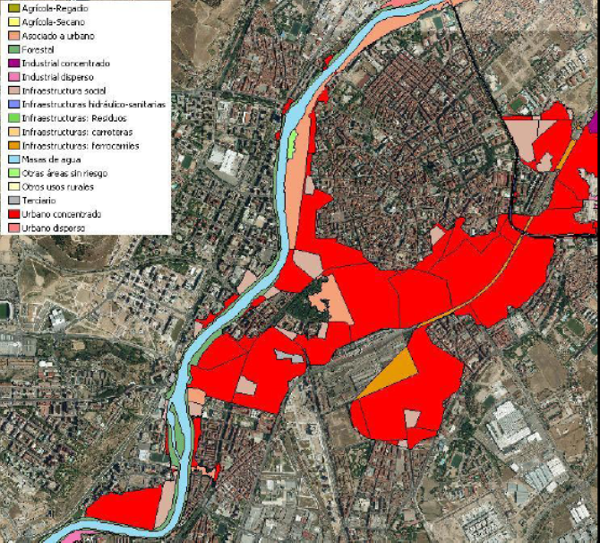
Download
D2.2 - Baseline document to ValladolidThe Baseline to Valladolid is the first measurement of all the key performance indicators (KPIs) contemplated in the URBAN GreenUP project for the Valladolid Demo-Site.
It allows knowing the indicators value before the planned actions execution and the comparison of the same indicators after the execution of the actions. Therefore, Baseline establishes the starting point of the Project and for every intervention.
Baseline definition begins with a regulations analysis, as well as the challenges and limitations for every Nature Based Solutions (NBS) group.
For the city of Valladolid there have been initially selected 46 KPIs, which include 29 core KPIs. For every KPI and the EKPLISE Challenge it addresses, the type of indicator and measure unit are identified. KPI proposed units show an initial measure method identified for every NBS.
For every KPI, the currently available data sources for calculating the Baseline have been identified, as well as the data sources that do not currently exist but are planned to be considered within the URBAN GreenUP project. KPIs are grouped into technical, economic and social indicators.
Download
D2.3 - Technical specifications of Valladolid demoThis report describes the technical and economic definition of the 42 interventions to be installed along the city of Valladolid, which include 36 Nature-Based solutions, NBS, and 6 Non-technical interventions. ...
Some non-technical interventions for environmental education, engagement, city coaching and support activities, are developed in the three Sub-Demo areas indistinctly.
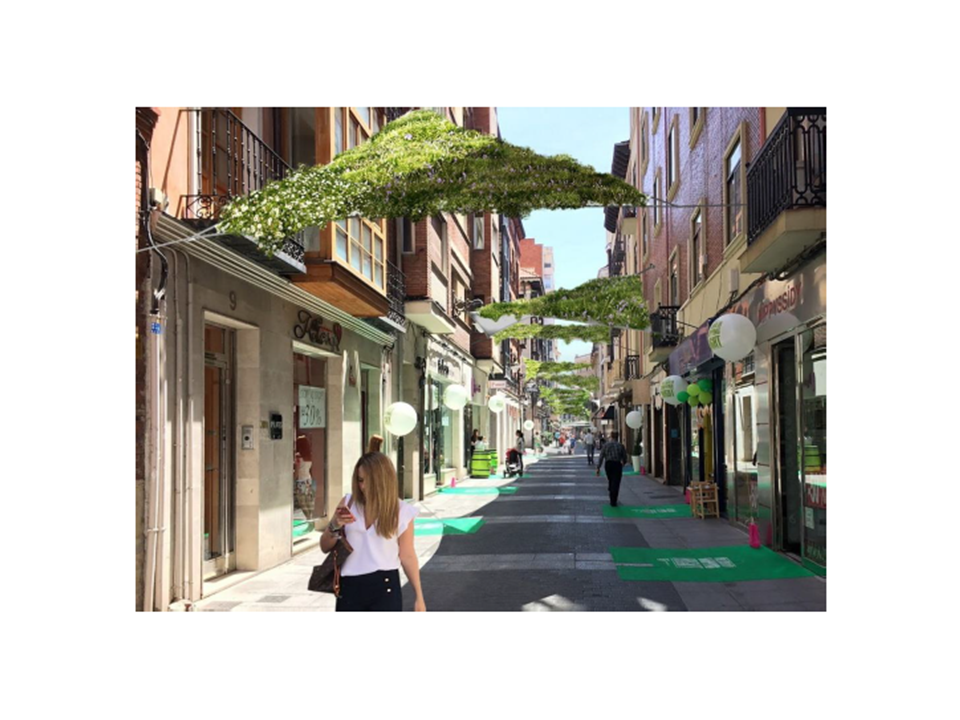
Download
D2.4 - Monitoring program to ValladolidThis document outlines the monitoring protocols proposed for the City of Valladolid URBAN GreenUP interventions.
This monitoring protocol focuses on the principles and procedures of the biophysical and social monitoring, as structured by the Eklipse framework (Raymond et al. 2017) and KPIs selected in the City of Valladolid. For each KPI, the document describes the rationale for measuring the indicator, including associated literature that suggests why it may be important and/or relevant.
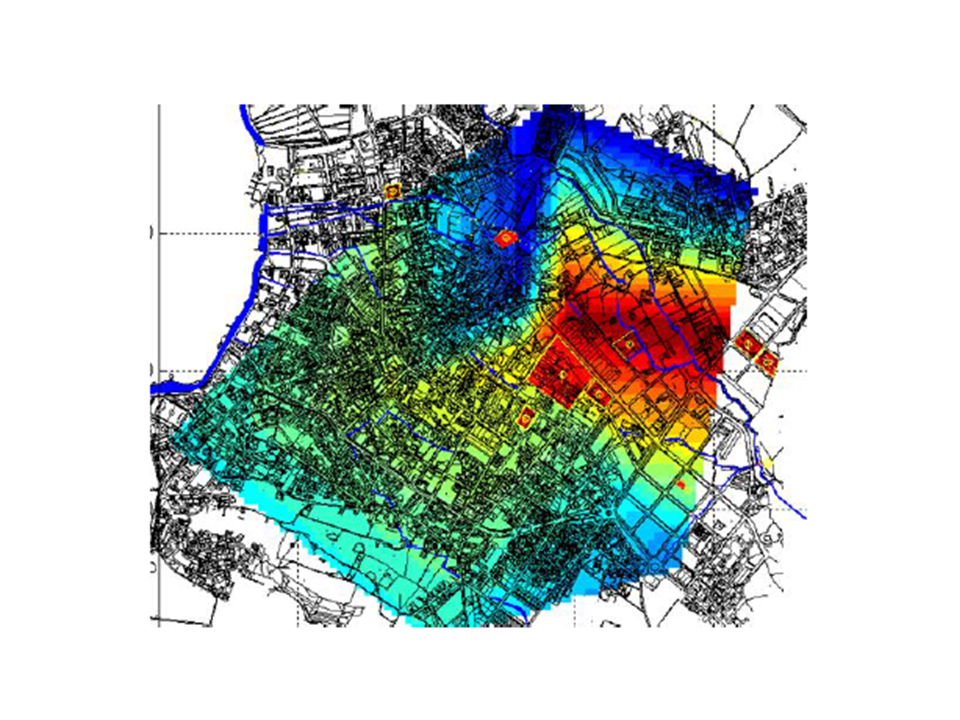
Download
D2.5 - Tender documents of Valladolid DemonstrationThis report contents the procurement plan designed for the implementation of the interventions of the URBAN GreenUP project for Valladolid Demonstration (WP2).
This report should be understood as a working guide, whose content and specifications may vary in the following months according to new considerations during the public tendering process and update the technical specifications. After a final review of the tendering process, the public procurement process will be launched, from October 2018.
Valladolid City Council is the Contracting Authority of the URBAN GreenUP’s tendering processes for implementing the nature-based solutions technical interventions in Valladolid. The rest of the partners of Valladolid demo team, CARTIF, Singulargreen, LEITAT, River Duero Basin and CENTA, among other responsibilities are in charge of delivering the technical- economical projects (P) ready to launch through a public procurement process that will implement the interventions in the city.
Download
D2.6: Report on implementation progresses in ValladolidThis report describes the development of the implementation of the interventions in Valladolid and the monitoring elements, according to the technical and economic specifications of the NBS developed by the URBAN GreenUP project WP2 demo partners.
The purpose of this deliverable is to show the development of the interventions in Valladolid and to demonstrate the implementation, installation and monitoring of the solutions.
This deliverable shows the different stages for the successful implementation of the demonstrative interventions and describes the work done to date and the first milestones achieved.
The report describes the development of the tendering procedures, the public processes and civil works, describing not only the technical issues, but also experiences that have occurred.
This report identifies the barriers, challenges and opportunities affecting the development and the final results, and aims to address these as clearly and as pragmatically as possible.
Furthermore, the development and implementation of the actions involves a learning process for all the stakeholders to be used in the definition of a methodology to be replicated in other areas and scenarios.
Download
D2.7 Final report about implementation and commissioning of NBS in ValladolidThis deliverable shows the different stages for the successful implementation of the demonstrative interventions in Valladolid, technical and non technical, and describes the work done to date and the milestones achieved.
The report describes the development of the tendering procedures, the public processes and civil works, describing not only the technical issues, but also experiences that have occurred. The implementation process is defined as a learning process that adapts to the circumstances, problems and barriers, and takes advantage of the different opportunities for co-creation and co-development to exploit the maximum potential of the process and resources available.
Download
D3.1 - Report on the diagnosis of LiverpoolThe following report sets out the ecological and socio-economic diagnosis undertaken for Liverpool. It presents an overview of the city’s social, economic and ecological resource base, as well as its current development context.
The diagnosis builds on the evidence-base of a comprehensive evaluation of Liverpool’s green infrastructure (GI), assessing the current GI network and Nature-Based Solutions (NBS) in the city, and identifies gaps in the network and opportunities to introduce innovative NBS in a way that takes advantage of favourable policy conditions.
The report provides an evidence base for the URBAN GreenUP interventions In Liverpool to test and demonstrate NBS and provide the basis for upscaling the approach in the city, replicating the approach in follower cities and enabling exploitation in markets for NBS across the world.
Our diagnosis of the city has used the Eklipse methodology currently under development as a framework. Key performance indicators (KPIs) have been proposed for the city based on this framework. A number of these indicators have been identified as common across all three lead cities.
The diagnosis for Liverpool has used a wide range of data sources to describe the city, identify key issues to address, suggest types of green infrastructure interventions that might be considered and point to demonstration areas where more, in depth, assessment and specification of interventions can take place.
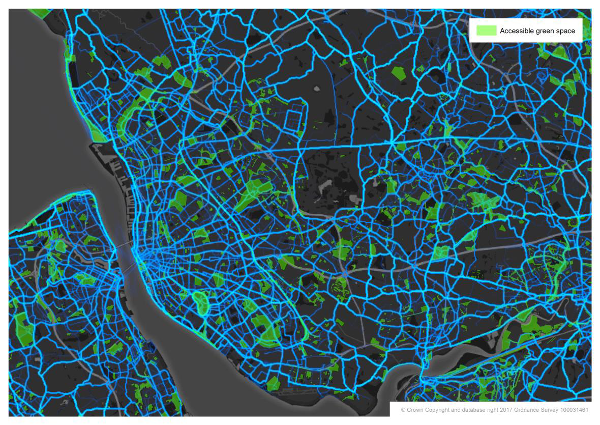
Download
D3.2 - Baseline document for LiverpoolThree demonstration areas, with a buffer that includes nearby schools, have been selected for the implementation phase of Urban GreenUP in Liverpool.
Demonstration areas were selected according to the following criteria:
- Opportunity to implement NBS in relation to identified issues for the city.
- Opportunity to implement NBS in the time available
- Availability of match funding for NBS interventions
- Engagement and support from landowners, partners and stakeholders
- Established political support
- Opportunity to demonstrate innovation.
In addition, we have identified schools in a buffer around these areas whom we wish to engage and involve in the delivery of NBS.
Detailed assessment of these areas using the Eklipse Challenge Framework, has identified the key issues for NBS to tackle in the demonstration areas. In terms of key challenges, issues related to urban heat island, air quality and water management are key concerns. A great deal of work has taken place to identify pluvial and other flood risks to the city. Star Tools has been used to identify how the planned interventions through Urban GreenUP can help to both reduce flood risk and also reduce impacts of urban heat island.
An Ex Ante valuation of the planned interventions indicates that from a capital investment of €2.4m, a range of benefits will be provided with an estimated value of €7.9m in terms of wide economic benefit, and €1.3m of GVA. This represents a good investment in the continued, sustainable regeneration of Liverpool.
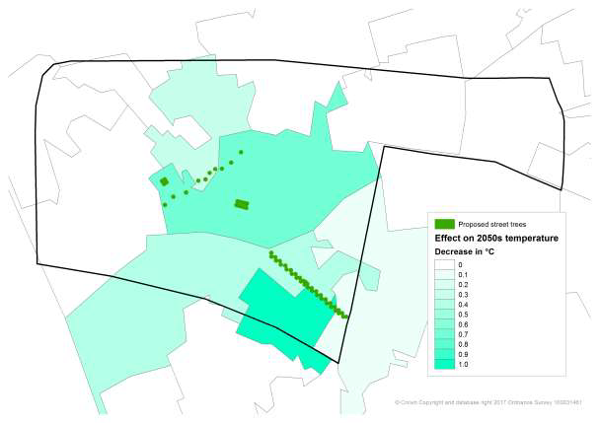
Download
D3.3 - Technical specifications of Liverpool demoThe Technical Specification sets out details for each of the technical interventions and non-technical interventions in the three Liverpool demonstration areas.
For each intervention, the document also brings together: the specific location; budget; KPIs; anticipated impacts.
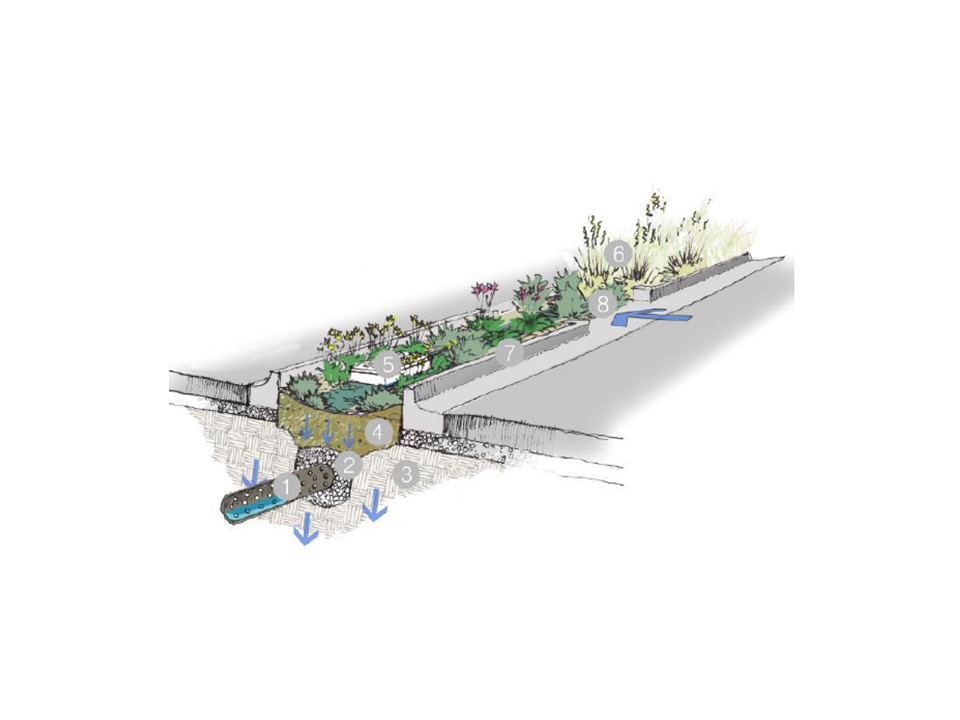
Download
D3.4 - Monitoring program to LiverpoolThis document outlines the monitoring protocols proposed for the City of Liverpool URBAN GreenUP interventions.
This monitoring protocol focuses on the principles and procedures of the biophysical and social monitoring, as structured by the Eklipse framework (Raymond et al. 2017) and KPIs selected in the City of Liverpool.
For each KPI, the document describes the rationale for measuring the indicator, including associated literature that suggests why it may be important and/or relevant
Download
D3.5 - Tender documents for Liverpool DemonstrationThis report seeks to outline the way forward to procure the various Nature Based Solutions identified.
This report details the content and timing for the soft market testing and identifies a timetable for the following formal procurement and tendering phase of this work early in 2019. The proposed timetable ensures that Liverpool will be ready to start the installation of identified NBS by September 2019 in line with the other front runner cities and the overall project timescale.
Download
D3.6: Report on implementation progress in LiverpoolThis report describes the development and progress in the implementation of the interventions in Liverpool.
Liverpool, together with Valladolid in Spain and Izmir in Turkey, is one of three front-runner cities in the EU Horizon 2020 project, URBAN GreenUP
This report summarises progress to date for a range of intended NBS across the three sub demo areas and illustrates this according to a scale of percent delivery.
The document includes an update on the tendering procedures; describing both technical issues which have arisen or need to be considered, together with barriers which have impacted on original proposals so that the learning from the Liverpool work can be shared.
Download
D3.7 Final report about implementation and commissioning of NBS in LiverpoolThis report details the three main approaches or categories of procurement that emerged from the soft market testing exercise and illustrates the various lots and projects within each category.
For each project there is an overview of the procurement approach adopted, the delivery on site and a review of the key issues affecting implementation. This is supplemented by additional detail on the supervision of project delivery, the future establishment and maintenance of the various Nature Based Solutions (NBS) and the level of progress/completion to date.
Download
D4.1 - Report on the Diagnosis of IzmirThe present deliverable provides a detailed assessment and prioritization of climate change related environmental and water challenges in the city of Izmir.
The Report tackles the present state of play in the city of Izmir, summarizing the situation and supplying information in the following subsequent parts: overall city description and geographical, socio-economical framing; climate, coastal resilience, water and green space management as well as air quality considerations; urban regeneration perspectives; participatory planning and governance; social justice and cohesion considerations; public health and well being; economic valuation via ecoservices opportunities.
A discussion of various barriers to NBS adaptation as well as indicators pertaining to the diagnosis is also included in the Report.
Download
D4.2 - Baseline document to IzmirThis document pinpoints the position of the sub-demo areas of Izmir implementation, summarizes the current situation and provides baseline values of the sub demo areas so as to support the evaluation process after the implementations are carried out.
Detailed assessments of sub demo areas, their description, exact locations and NBS to be realized in these areas are detailed in the report.
A discussion of various challenges and limitations to NBS implementation and adaptation as well as indicators pertaining to the baseline are also included in the Report.
Download
D4.3 - Technical specifications of Izmir demoThis report explains SUBDEMO’s interventions in detail for İzmir. The city of İzmir will become resistant to climate change effects with the replication of pilot nature based solutions (NBS) that will be implemented for the Urban GreenUP project.
The NBS specified are located in 3 demo sites and there are also non-technical interventions. According to the result of the analysis of sub demo areas conditions, interventions will be implemented. A description of interventions to specific SUBDEMOs is included in this report. In addition, that SUBDEMO’s feature, intervention’s economic, operational and technical aspects have been discussed in the report in detail.
The document is subject to approval from the European Commission
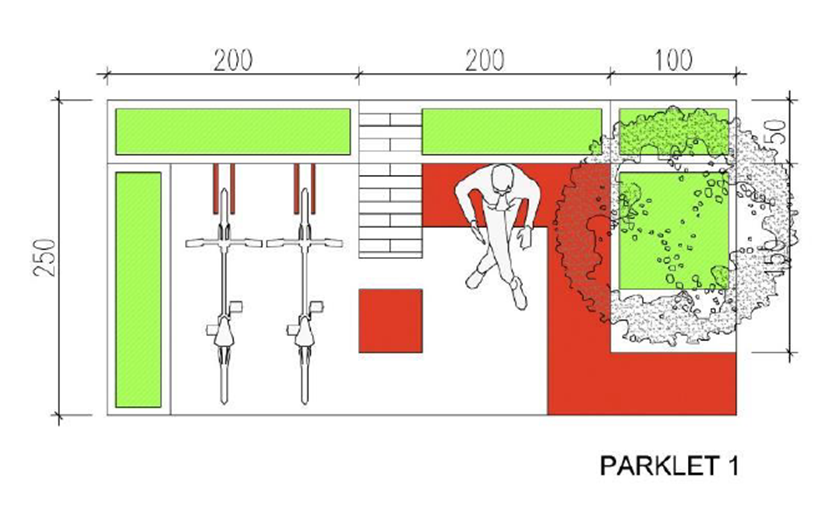
Download
D4.4 – Monitoring program to IzmirThis document outlines the monitoring protocols proposed for the City of Izmir URBAN GreenUP interventions.
This monitoring protocol focuses on the principles and procedures of the biophysical and social monitoring, as structured by the EKLIPSE framework (Raymond et al. 2017) and KPIs selected in the City of Izmir.
The document is subject to approval from the European Commission
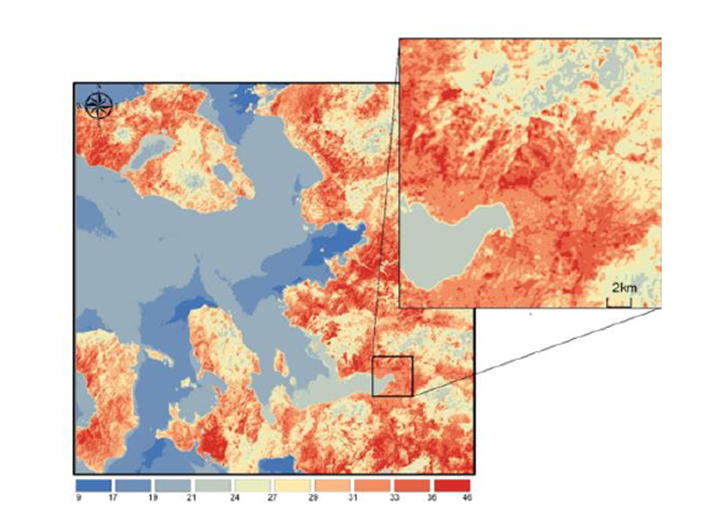
Download
D4.5 - Tender documents for Izmir DemonstrationThis document contains fundamental information about the tender processes of NBSs to be implemented in Izmir sub demos in the scope of Urban GreenUP project.
The tender documents for Izmir demonstration document mainly consist of;
A detailed explanation of national procurement law of Turkey which Izmir Metropolitan Municipality should follow for the tender processes of NBSs going to be implemented in Izmir,
The details of procurement plan, procurement lots,
Evaluation of procurement processes for different lots
A schedule for procurement process of all interventions
The most important detail needs to be taken into consideration about this document is that it reflects the current procurement plan of Izmir’s demo areas and planned interventions.
Download
D4.6: Report on implementation progresses in IzmirThis document contains fundamental information on current status of each NBS to be implemented in Izmir sub demos in the scope of URBANGreenUP project.
The fundamental information includes overall progress on NBSs, implementation steps for completed interventions, (All Sub Demo A interventions), implementation progress of on-going interventions (on Sub Demo C) and updated timetables including implementation phase of the interventions.
After the introduction chapter, in second, third and fourth chapter the information mentioned in previous paragraph investigated for each sub demo respectively. In the subsections of these chapters there is a further investigation for each NBS in terms of their current status.
In chapter 5, non-technical NBSs are explained with similar tables representing the current status. Chapter 6 is summarizing the timetables and gives the opportunity to follow the planned important dates in terms of implementation of each NBS together.
Download
D4.7 Final report about implementation and commissioning of NBS in IzmirThis report includes details on the implementations within sub demo areas in Izmir and contains also implementation and commissioning details of all completed actions.
This document contains information about overall progress on NBSs, implementation steps for completed interventions, (All sub demo A and sub demo C interventions), implementation progress of on-going interventions (on sub demo B) and updated timetables including implementation phase of the interventions
Download
D5.1 - Technical KPIs DefinitionThis deliverable defines a set of KPIs (key Performance Indicators) that will be used to assess the methodology defined in Work Package 1 (WP1): renaturing city methodology and also in each demonstration city diagnosis and baseline being developed (WP2, Valladolid; WP3, Liverpool; WP4, Izmir), where the projected NBS (Nature Based Solutions) are related to both a challenge (below) and to KPIs.
In this document the methodology shall be approached by defining the main challenges and goals that will draw directly from the Eklipse Mechanism; a self-sustained mechanism under the umbrella of the European Union’s Horizon 2020.
The KPIs are based on the Eklipse mechanism framework, where a robust set of KPIs shall be selected and established by challenges that relate to NBS. These challenges are: Climate mitigation & adaptation; Water Management; Coastal Resilience; Green Space Management; Air Quality; Urban Regeneration; Participatory Planning and Governance; Social Justice and Social Cohesion; Public Health and Well-being; Potential of economic opportunities and green jobs; Other challenge/s
This document will provide a detailed definition of calculation formulas and indices in order to measure and evaluate the accuracy and quality of the Key Performance Indicators.
Download
D5.2 - Urban Platform and Data Guidelines / Sustainable ICT Platform HL Design and Raw Data GuidelinesThe global monitoring and evaluation of the Urban Greenup ICT platform is of importance and depends on the city KPI calculation platforms enabled and or developed for the different types of KPIs received from the respective partner cities' data and or model of systems and platforms.
This report will provide an effective and sustainable framework and architecture to produce the necessary visualization of the KPIs. The KPIs are basically reported and collected from a combination of guidelines provided for raw data, KPI calculation processes and user’s engagement at different cities of concerns.
The platform is not just for raw data collection but also for visualization, scientific storage, scientific visor, decision making processes, and additionally provides an engagement platform for users from scientific communities, and, municipalities to interact and make proactive “green” solutions for cities at large.
This task uses KPIs from partner cities, data, ICT capabilities to produce a digital model for cities that fulfils the goal of using necessary data as required to measure or track changes with respect to defined KPIs or baselines. This work also serves as a scientific tool for developers of climate solutions for urban cities and provides a model that enable smart usage of data for “green” status.

Download
D5.3: City Diagnosis and Monitoring ProceduresThis deliverable aims to continue the definition of the Key Performance Indicators selected for the project URBAN GreenUP.
It shall define the set of KPIs (Key Performance Indicators) selected, that will be used to assess the methodology defined in Work Package 1 (WP1): renaturing city methodology and also in each demonstration city diagnosis and baselines being developed (WP2, Valladolid; WP3, Liverpool; WP4, Izmir), where the projected NBS (Nature Based Solutions) are related to both a challenge and to KPIs. In this document the methodology for the monitoring of different NBS and a global perspective, shall be approached by outlining the main challenges and focused on goals that have been drawn directly from the Eklipse Mechanism; a self-sustained mechanism under the umbrella of the European Union’s Horizon 2020.
Download
D6.1: Establishment of the URBAN GreenUP cluster and Network of Cities with an interest in NBSThe aim of the current document is to describe the establishment of the Urban GreenUP Cluster and Network of Cities, along with the concrete definition of the key structuring elements for its operation.
In Chapter 1 it is explained how the establishment of the Urban GreenUP Cluster and Network of Cities is aligned with s the specific project objectives, forming a key part of the methodological approach.
Chapter 2 defines the URBAN GreenUP Cluster and Network of Cities main and specific objectives.
Chapter 3 sets the governance model and operational structure providing the framework under which the project replication activities will be developed.
Chapter 4 provides a description of the activities to be carried out in order to meet the project’s replication objectives.
Chapter 5 focuses on a detailed overview of the relevant activities developed to date.
Finally, Chapter 6 focuses on the next steps and monitoring. A timeframe comprising the actions/activities to be developed and organized until the end of the project is provided.
Download
D6.2 Characterization of front-runner and follower cities from the perspective of the implementation of NBSThis deliverable aims to develop a characterization report for (front-runner and follower cities) on their current urban environment challenges, drivers, and pressures due to anthropogenic activities, climate ...
Within this deliverable, the following objectives are addressed:
Ø Conceptualize, analyse and qualitatively characterize the typical drivers, pressures, environmental states of the cities across the project in relation to complex social-economic and institutional systems that entails certain NBS implementation and integration;
Ø Identify the suitable NBS applications relevant to the context of the city.
Download
D6.3: Analysis of Replication PotentialThis report outlines a systematic, transparent and iterative model for analysing replication potential in cities.
The report has two components: an outline of the replication model, used to determine replication potential and the application of the model to each partner city, with assessments of replication potential in each city.
Chapters are ordered to reflect the first round of follower cities (Mantova and Ludwigsburg) then the second round of followers (Quy Nhon and Medellín) and finally the frontrunners (Izmir, Liverpool and Valladolid).
Download
D6.7 - URBAN GreenUP information packagePromotional material and collateral to promote EU capacities and expertise in the NBS market through specific examples from the consortium
D6.7. provides information on the most relevant NBS implemented by the European project partner cities (Valladolid, Liverpool, Izmir, Ludwigsburg and Mantova), with the final aim to promote widespread acceptance, awareness, replication and dissemination of the RUP methodology and of the individual NBS implemented in the URBAN GreenUP project among and beyond Front Runner and Follower cities
Aiming at effectively promoting EU capacities and expertise on the NBS field by showcasing interesting and iconic examples from Urban GreenUP consortium, the main outcomes of this deliverable have been systematized into an infopack, which will be widely disseminated among the main target groups.
The document is subject to approval from the European Commission
Download
D7.2: Report on ESA monetary evaluation for NBSThis deliverable describes the methodology used for the ex-ante valuation performance of NBS and the ex-ante economic valuation performance of NBS in front-runner cities: Valladolid, Liverpool, and Izmir.
The deliverable is composed by different blocks:
1. Description of the methodologies and tools for the economic valuation of the ecosystem services;
2. Explanation of the benefit transfer technique adopted for the ex-ante valuation performance of NBS in Front-runner cities;
3. Literature review of case studies of NBS economic valuation at urban level;
4. Definition of a matrix used for the ex-ante economic valuation and association of the values detected in the case studies review to the NBS planned in Front-runner cities;
5. Ex-ante economic valuation in Valladolid, Liverpool, and Izmir.
Download
D7.3 Guidelines for the application of ESA methodology in different contestsThe deliverable 7.3 “Guidelines for the application of the ESA methodology” aims at analysing and provide a comprehensive framework of the methodologies and tools available for the evaluation of the ecosystem services provided by NBS at the urban level.
Four main blocks compose the deliverable:
1. Definition of the connection between the NBS, the ecosystem services, and natural capital;
2. Description of the methodologies used for the economic valuation of ecosystem services at urban level;
3. Description of the tools for the ecosystem service economic valuation of ecosystem services at urban level;
4. Definition of the guidelines for the ecosystem services valuation at the urban scale.
Two documents are attached at the deliverable. The first one summarises the methodologies for the economic valuation of the ecosystem services generated by NBS with related examples and cases study. The second document summarises the tools used for economic valuation. This derivable will be used as the base to perform the ex-ante economic valuation of the NBS implemented in front-runner cities: Valladolid, Liverpool, and Izmir.
Download
D7.4 Guidelines for the use of innovative financial instruments and to design business models to implement NBSThis deliverable aims to provide a clear and a comprehensive framework for the development of business models for NBS that can be used by cities.
This deliverable describes:
- the outcomes of the desk research on relevant projects and publications on NBS business models and possible financial instruments, as well as on the key dimensions and criteria to be considered in the definition of a business model, and of the values linked with NBS implementation;
- the analysis of financial mechanisms to implement NBS;
- the business model canvas for NBS that be used by cities to define an ad hoc business model.
Download